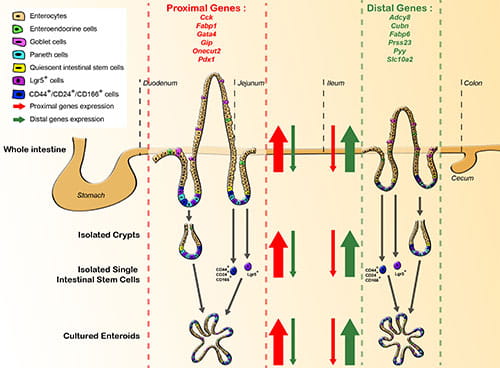Regional Patterning of Intestinal Stem Cells
The small intestine bears similar morphology of crypts and villi throughout its length. However, there are well known marked regional differences in function. The clinical relevance of these differences is highlighted by the regional specific location of many human diseases throughout the bowel. Understanding the mechanisms that result in regional specific intestinal stem cells (ISC) is required to develop therapeutic approaches for restoring regional specific function.
Our preliminary data supports the concept that patterning of the intestine occurs early in development and is maintained throughout life at the level of the ISC. We recently developed in vitro methods to culture human ISC-derived enteroids (hENO), producing conditions that regionally pattern human HESC/iPSC-derived organoids (HIOs). This, combined with unique transplantation models, provides a novel and ideal experimental approach. Our approach tests whether intestinal regional identity (rID) is stably maintained by specific transcription factors (with a unique chromatin state within individual ISC) independent of mesenchymal influence. Figure 1 - Regional identity is programmed within the crypt unit and is regulated at the stem cell level.
Figure 1 - Regional identity is programmed within the crypt unit and is regulated at the stem cell level.



